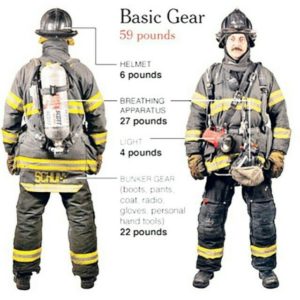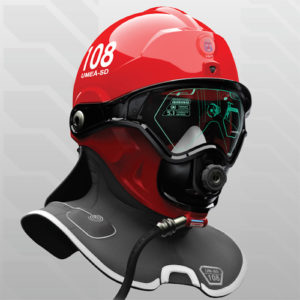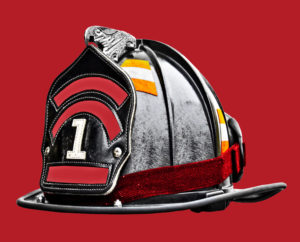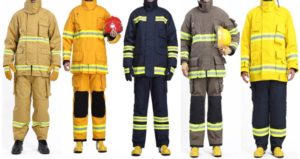By: Rick Markley, Guest Blogger
Firehouse Editor-in-Chief Tim Sendlebach’s August editorial looks at what seasoned firefighter can, and should, do to

Manufacturers of FF protective gear are constantly looking to make that gear lighter and more wearable.
better accept and get the most out of the incoming crop of new firefighters. As he and others have said, this is not a new problem; firefighters have always grumbled about the new generation not being as good as past generations.
Change is constant
Dealing with new generations is about dealing with change, not an easy task. And that too, is neither new nor exclusive to the fire service. In nearly every walk of life, we humans are in a constant struggle to predict, influence and adapt to change.
I recently wrote an article for a U.K.-based firefighting magazine for publication later this year. In researching it, I talked with several fire industry experts about what we can expect for near-term changes to our gloves, boots and helmets.
I won’t give away that article’s ending, but will say that writing it made me think a lot about future generations of firefighting PPE – well beyond what could be covered in that piece. Those experts all agreed that the foreseeable future of PPE will be one of evolution more than revolution.
The pace of change
As one expert put it, there’s no Moore’s Law at play here. Moore’s Law is used to describe and predict technological advances that double from year to year, or that grow exponentially.
No one can argue that the technology that makes our PPE what it is has been doubling each year, nor is it expected

Helmet manufacturers are incorporating many technological advances into new helmet designs.
to. But what if we experience something akin to a Moore’s Law Light? And what might a rookie’s firefighting PPE look like in 2029 when she’s ready to step into it? (She and her cohorts are entering 1st grade this year).
Novelist William Gibson often said that the future is here now, but not very evenly distributed. In short, the latest and greatest is simply way too expensive to benefit the masses.
What technology may hold for firefighter PPE
Considering the problems facing today’s firefighting PPE – reducing weight, balancing protection vs dexterity, eliminating heat, etc. — and matching that up with proto-type or way-to-expensive solutions, may offer some insight into what’s to come.
For example, researchers at MIT recently developed a fabric-like material that automatically contracts and expands with temperature changes. And another group developed a similar product, called bio-skin, using bacteria to create fabric that opens and closes based on heat.
Will similar technology one day be available for firefighting gloves that increases and decreases the thickness of thermal protection (and conversely dexterity) base on how hot its exterior gets? Could this find its way into bunker coats and pants to lighten the weight, improve body heat removal and respond to whatever level of protection is needed?
Could such a material expand and contract within a firefighting boot to alter levels of protection as well as adjust to  the user’s foot as it swells during prolonged activity?
the user’s foot as it swells during prolonged activity?
Other researchers are developing shoes that stop the wearer from falling. It’s being tested for seniors, but will it ever see occupational use?
Scientists have also developed material that can change its shape and remember its original shape. Can you imagine a helmet that can shift its shape between American style and European style based on the operation? Scandalous, I know.
There is also work being done on fibers that can extend and recoil with a touch and lift 1,000 times their weight. Is there a future for this material in bunker gear to give firefighter’s added strength for rescue scenarios or to reduce back injuries?
One of the experts I spoke with says the future of PPE development will be driven by how the fire service perceives its mission. As we decide which tasks we’ll do and not do and how we’ll get those tasks done will be key to the type of PPE manufactures bring to market.
mission. As we decide which tasks we’ll do and not do and how we’ll get those tasks done will be key to the type of PPE manufactures bring to market.
Speculating on what our PPE will do in 20 years’ time may not lead to spot-on predictions, but it’s a useful exercise we should all do to sort out what we need and want to attack tomorrow’s fires – and more importantly, how we plan to carry out those attacks.
How do you see future generations playing out?
About the Author

Rick Markley
Rick Markley is the former editor-in-chief of FireRescue1 and Fire Chief, a volunteer firefighter and fire investigator. He serves on the Board of Directors and Director of Communications at IFRM. He holds a bachelor’s degree in communications and a master’s of fine arts. He has logged more than 15 years as an editor-in-chief and written numerous articles on firefighting. He can be reached at [email protected].
Links
http://news.nationalgeographic.com/news/2004/10/1013_041013_smart_clothing_2.html
http://www.engineering.com/DesignerEdge/DesignerEdgeArticles/ArticleID/12824/Breakthrough-in-Shape-Changing-Materials.aspx
http://www.cnn.com/videos/cnnmoney/2017/07/25/bshoes-these-shoes-will-keep-you-from-falling-lon-orig.cnn-tech/video/playlists/stories-worth-watching/
 Fire & EMS Leader Pro The job of old firefighters is to teach young firefighters how to become old firefighters!
Fire & EMS Leader Pro The job of old firefighters is to teach young firefighters how to become old firefighters!